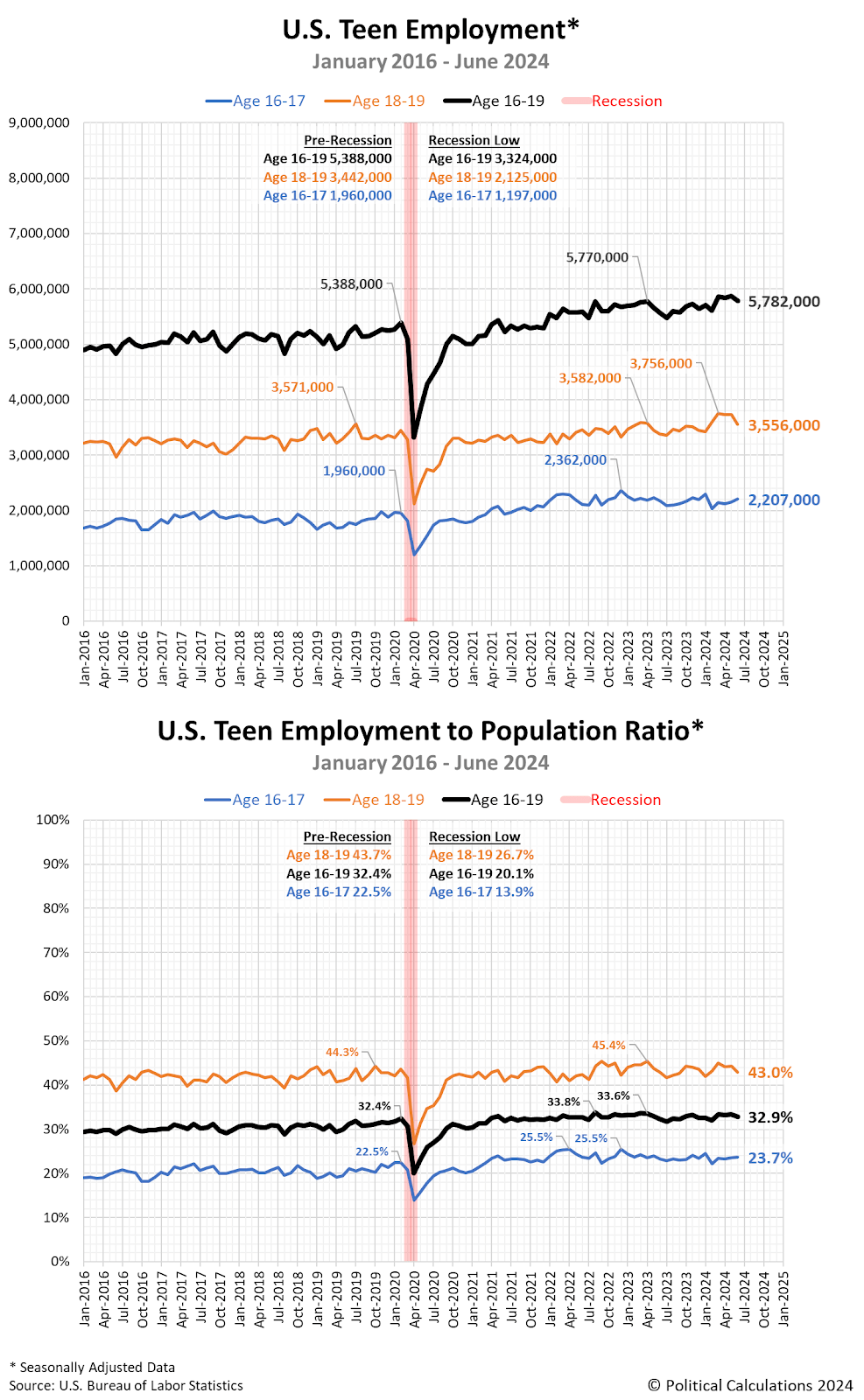If you pay attention to the job trends for American teens and listen to National Public Radio’s Marketplace, you might be in for a bit of a shock. According to this authoritative source, teen summer employment is “still booming“.
By that, they mean the percentage of the teen population Age 16-19 that is either working or looking for a job is on a rising trend and has reached a relatively high level after having fallen for decades.
There’s just one problem. To make that claim, they’re including teens who aren’t actually employed in their measure. They’re counting unemployed teens who don’t have jobs as if they do.
Here’s the actual claim:
In June, 37.4% of 16-to-19-year-olds were either working or looking for a job, according to the latest jobs report. That’s just shy of a 15-year high of 38% back in March.
Here’s the problem. When you title an article with a headline like “Teen summer employment is still booming”, the readers of that article are going to reasonably expect that you’re reporting on the number of teens who are employed. If you’re including the percentage of teens who do not have jobs but are looking for work in the figures you are reporting, you’re not really describing how successful teens are at getting jobs.
What you’re really describing is the size of the teen labor force. By definition, the teen labor force includes both the number of teens who have a job and the number of unemployed teens who do not but are trying to get one. And if you do that, what you’re not describing is how successful teens have been in getting employed.
What does the employment situation for teens look like when you only look at the ones who actually have jobs? Here’s the latest update to our charts tracking the employment of working age U.S. teenagers (Age 16-19) in the U.S. from January 2016 through June 2024. The top chart shows the seasonally adjusted employment numbers for the entire Age 16-19 population and also the demographic subgroups of younger working teens Age 16-17 and older working teens (Age 18-19). The bottom chart shows the employment-to-population percentage for each of these demographic groups:

When we do that, we find nothing special about 2024’s summer teen employment situation. The seasonally-adjusted data shows the combined total of Age 16-19 teens with jobs declined a small amount from May 2024’s level. The subgroup data indicates that reported decline came mainly among older teens (Age 18-19), as the number of younger teens (Age 16-17) with jobs increased over the previous month.
The upper chart shows the rising for teen employment have been rising during most of the post-pandemic recession era, but the next chart showing the seasonally adjusted U.S. teen employment to population ratio shows teen employment isn’t really booming at all.
Instead, it shows the percentage of the U.S. working age teen population who have successfully obtained jobs peaked between December 2022 and April 2023 depending on the particular age group. June 2024’s data for each of the groups we track is below those peaks. This chart confirms the actual teen employment boom, such as it was, peaked in late 2022 and early 2023. If summer teen jobs were “still booming”, we’d see a rising trend in 2024 in this seasonally-adjusted data, particularly during the summer months.
It’s not a bad job market for teens. It’s just not a “still booming” one. It hasn’t been for over a year. Perhaps that will change as we get further into Summer 2024, but right now, the data is saying otherwise.
About the Seasonally-Adjusted Data
Each of the data series presented in these charts receives its own seasonal adjustment. Because of that, the numbers of working teens Age 16-17 and Age 18-19 won’t necessarily add up to the totals shown for the combined Age 16-19 population. If you’re looking for employment figures that do add up, you’ll want to review non-seasonally-adjusted data.
References
U.S. Bureau of Labor Statistics. Labor Force Statistics (Current Population Survey – CPS). [Online Database]. Accessed: 3 May 2024.
Original Post
Editor’s Note: The summary bullets for this article were chosen by Seeking Alpha editors.
Read the full article here









Leave a Reply